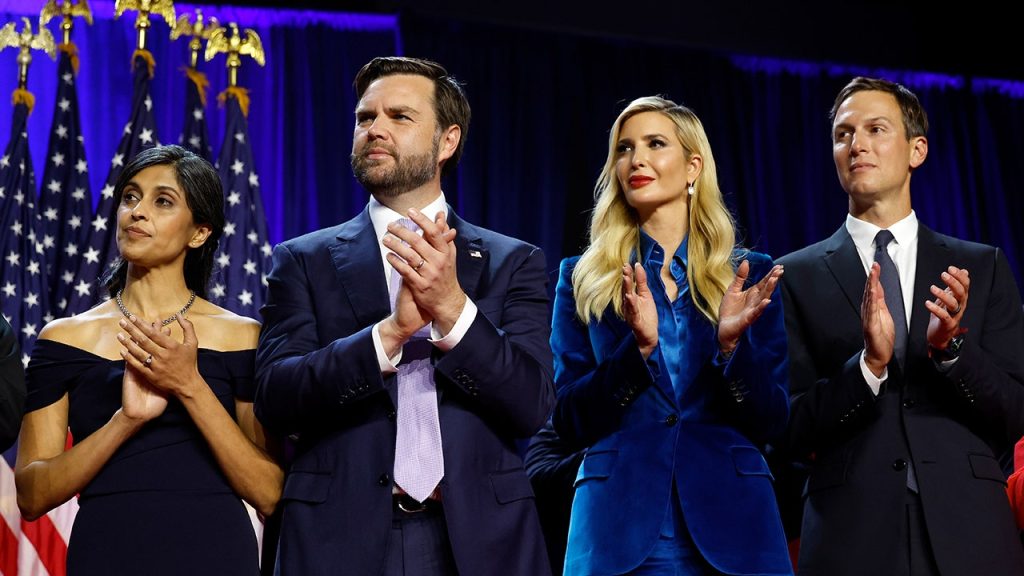Usha Vance is set to become the first Indian American second lady in the White House as her husband, Vice President-elect JD Vance, prepares to lead the country in a second Trump presidency. Vance, who is also the first Hindu second lady, has been credited by her husband for making his political success possible. They have been married since 2014 and have three children together. Usha Vance has an impressive educational background, with a bachelor’s degree in history from Yale and a master’s in philosophy from the University of Cambridge. She has also completed clerkships for Supreme Court Chief Justice John Roberts and Supreme Court Justice Brett Kavanaugh.
Usha Vance has shared how she deals with negative press coverage of her husband, who made headlines during the Republican National Committee in July. Despite their different backgrounds – with Usha growing up in a middle-class community in San Diego with immigrant parents from India – she and JD have found love and a successful marriage. Usha’s unique background and experiences contribute to the diverse and evolving representation in the White House, reflecting the multifaceted identities of individuals across the country. Her ability to navigate challenges with grace and resilience highlights her strength as a supportive partner and potential second lady.
Vice President-elect JD Vance expressed gratitude to his wife, Usha, for her role in his political achievements and their shared journey together. In a message of thanks to Usha, President Donald J. Trump, and the American people, Vance promised to continue fighting for the country and its citizens. This commitment to service and dedication to the American people is a core theme of the upcoming second Trump presidency, with Usha Vance poised to bring her own unique perspective and contributions to the White House as the first Indian American second lady.
As the country prepares for the inauguration of a second Trump presidency, the historic significance of Usha Vance’s position as the first Indian American second lady is a testament to the diversity and inclusivity of the United States. Her background and experiences reflect the rich tapestry of immigrant narratives that have contributed to the fabric of American society. Usha’s journey from the daughter of Indian immigrants to the potential second lady of the country symbolizes the opportunities and progress that are possible in the United States. Her role in shaping the future of the White House represents a new era of representation and leadership in American politics.
Usha Vance’s presence in the White House as the first Hindu second lady is a milestone in the country’s history, highlighting the growing diversity and inclusivity of political leadership. Her story of love, resilience, and success alongside her husband, Vice President-elect JD Vance, is a reflection of the American dream and the potential for individuals from all backgrounds to achieve their goals. Usha’s background as an attorney and her commitment to public service exemplify the values of hard work, determination, and dedication that are essential in political leadership. Her role in the upcoming second Trump presidency will bring a fresh perspective and representation to the White House, embodying the evolving landscape of American politics.
In conclusion, the election of a second Trump presidency and the upcoming presence of Usha Vance as the first Indian American second lady in the White House signals a new era of diversity and representation in American politics. Usha’s background, experiences, and commitment to service reflect the values and ideals of the United States. Her role as the first Hindu second lady and her unique journey from immigrant daughter to potential second lady symbolize the opportunities and possibilities available in the country. With her husband, Vice President-elect JD Vance, Usha Vance will play a vital role in shaping the future of the White House and the direction of the country, embodying the spirit of the American dream and the promise of a more inclusive and diverse political landscape.


